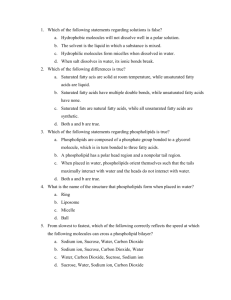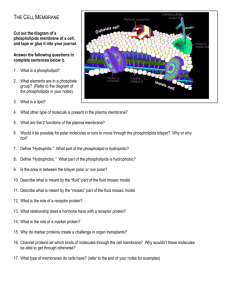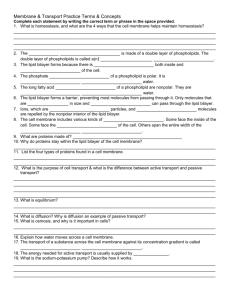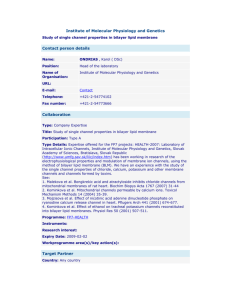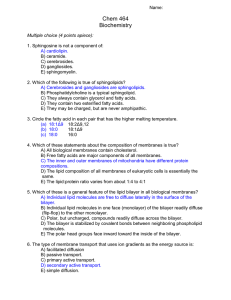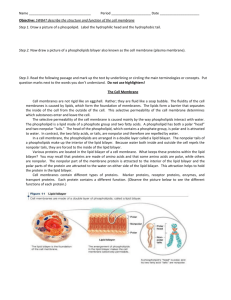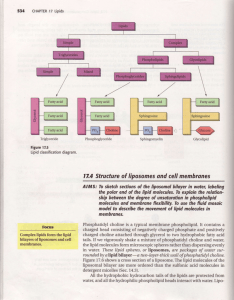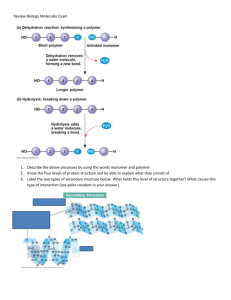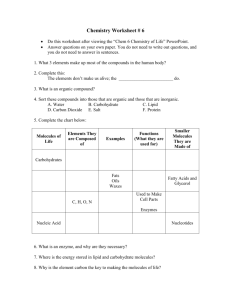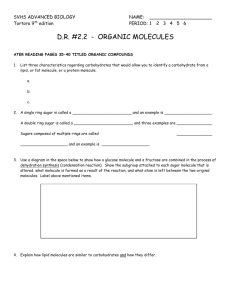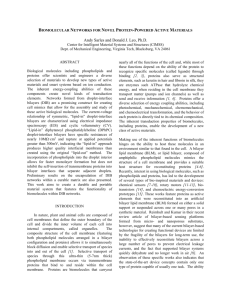Lipid Bilayer
advertisement
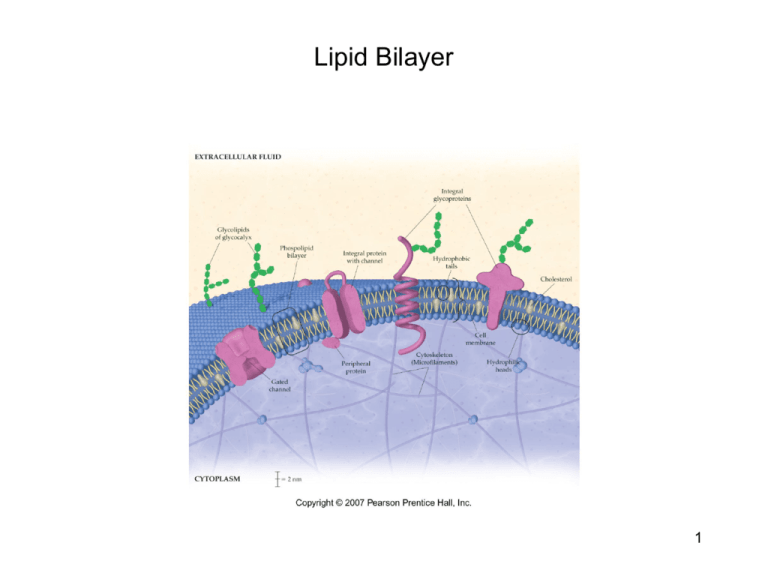
Lipid Bilayer 1 Lipid Bilayer • • • • • Phospholipids make up the basic structure of a cell membrane. Phospholipids are more polar than the lipids discussed thus far (triglycerides), because they contain a phosphate group bound to an amino alcohol unit in place of one of the ester linkages of a triglyceride. In the lipid bilayer, the polar “heads” of the phospholipids are arranged so as to interact with the aqueous environments on the inside and the outside of a cell, while the nonpolar “tails” coagulate together to form a nonpolar bilayer. The lipid bilayer also contains proteins channels (large biomolecules containing polar and nonpolar regions that we will discuss in more detail next week) that aid in the transport of ions and polar molecules. Glycoproteins contain a protein with a glycosidic linkage to a polysaccharide unit. The polysaccharides reside on the outside of the cell membrane and serve as receptors that interact with chemical messengers, drugs, other cells, antibodies, etc… These are the components of cells that result in different blood types: A, B, AB, and O. The lipid bilayer also contains cholesterol (a steroid, which is a type of lipid) that contribute to the structure of the bilayer. The cholesterol units are more rigid, and thus help to maintain the shape of the cell. 2 Lipid Bilayer Continued • • Passive transport: allows substances to move across the bilayer by diffusion from regions of higher concentration to regions of lower concentration. –Nonpolar molecules can pass directly through the lipid bilayer. –Ions and small polar molecules can pass through the integral protein channels so long as they can fit. –Larger polar molecules must undergo facilitated diffusion. This requires the binding to a protein, which in turn changes shape so as to allow the molecule in or out of the cell. Active transport: requires energy from Adenosine Triphosphate (ATP) to get molecules across the bilayer. Energy is required because these molecules are moving from regions of lower concentration to regions of higher concentration. 3 Lipoproteins • LDL-low density lipoproteins contain more of the lower density lipids and less of the high density proteins. • HDL-high density lipoproteins contain less of the lower density lipids and more of the high density proteins. 4 Saponification • This involves the hydrolysis of fats/oils. Remember that hydrolysis means splitting with water. The result is glycerol and 3 fatty acids. The fatty acids are then converted into salts of fatty acids. The salt of a fatty acid is SOAP! 5 Problems 1. 2. 3. 4. 5. 6. Unsaturated fats contain double bonds that are of the _____ geometry. When carboxylic acids and alcohols react they form ________ functional groups. Draw a line structure to represent the molecule formed when cyclohexanol reacts with pentanoic acid. Name the molecule drawn in #3. When an ester is split apart by water to form an alcohol and carboxylic acid the process is known as ________. Which of the following uses energy to maintain different concentrations across the cell membrane? a. Simple diffusion b. Facilitated diffusion c. Passive transport d. Active transport 6

